Here We WMD Again: Iraq and the Mythical Pakistani Package
A recent Washington Post story claiming that Saddam Hussein thought about buying nuclear technology from Pakistan has been picked up around the world and is already shaping policy. Unfortunately, it isn’t true.A recent Washington Post story claiming that Saddam Hussein thought about buying nuclear technology from Pakistan just isn’t true.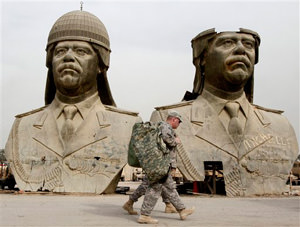
On March 10, The Washington Post published an article that caught my eye. Under a headline proclaiming “Saddam Hussein weighed nuclear ‘package deal’ in 1990, documents show,” Joby Warrick, the author of the article, declared in his opening paragraph, “As troops massed on his border near the start of the Persian Gulf War, Iraqi President Saddam Hussein weighed the purchase of a $150 million nuclear ‘package’ deal that included not only weapons designs but also production plants and foreign experts to supervise the building of a nuclear bomb, according to documents uncovered by a former U.N. weapons inspector.”
The source of the documents was David Albright, a nonproliferation specialist and president of the Institute for Science and International Security, a nonprofit organization that Albright himself founded. Albright talked to The Washington Post about these “newly uncovered” documents as part of a publicity campaign for the release of his new book, “Peddling Peril: How the Secret Nuclear Trade Arms America’s Enemies.” The Washington Post article was picked up by newspapers and other media outlets around the world, and has been cited by the Pakistani government as one of the reasons behind its recent decision to open a new investigation into the nuclear proliferation dealings of A.Q. Khan, who is also accused of selling nuclear weapons plans and related technology to Iran and Libya.
There is only one problem with The Washington Post story — it isn’t true. The fact is, there never was any such “package deal” worthy of the name, and, in any event, a Pakistani “deal” for a potential nuclear weapon was never “weighed” by Saddam Hussein or any other Iraqi official of note.
When dealing with an issue as controversial and complex as nuclear proliferation, it is essential to stick to the facts. Problems of this difficulty and magnitude must be properly defined prior to offering up a solution, since any solution to a problem that has not been properly defined is no solution at all.
Why worry about a story that is more than 20 years old? Because it continues to drive public perception and influence policy (in Pakistan, we know, and perhaps in other countries as well). One must be cognizant of the role that history plays in shaping present policy, which is why it is so important to get the story right in the first place. When it comes to the issue of nuclear nonproliferation, the stakes could not be higher.
President Barack Obama has made nuclear disarmament and nonproliferation one of the major policy objectives of his administration. While the execution of this policy currently leaves much to be desired (witness the much delayed, and uninspired, follow-on to the expired START agreement), there is no doubt that the problem of nuclear weapons is one which must be dealt with effectively not only in the interest of international peace and security for the near term, but for future generations as well.
Managing nuclear technology and material, including the matter of access and accountability, is the central problem that must be resolved if universal nuclear disarmament is to be achieved. Nations that possess nuclear weapons need to feel confident enough to agree to their elimination. Public opinion cannot be ignored. The problem of nuclear disarmament and nonproliferation is so technical in nature, those who are able to comprehend the nuances involved will do much to establish the parameters of the issue. However, public opinion will determine in large part the political viability of an effort as daunting as global nuclear disarmament. As such, the issue of how information is presented for public consumption is of paramount importance as to whether the public will choose to decide for or against any future policy.
This brings us to the matter of the Washington Post story, and the importance of setting the record straight. The two documents that The Washington Post describes as being “newly uncovered” are in fact derived from an old file containing nearly 1,000 pages detailing a relationship between the Iraqi intelligence service, or Mukhabarat, and the Iraqi nuclear weapons program, or PC-3. This file was part of a much larger cache of documents that had been recovered by the United Nations Special Commission, or UNSCOM, and the International Atomic Energy Agency, or IAEA, in September 1995 at the Haider Chicken Farm outside Baghdad, following the defection to Jordan of Saddam Hussein’s son-in-law, Hussein Kamal. Both UNSCOM and the IAEA were in Iraq to oversee the dismantling of that nation’s weapons-of-mass-destruction programs (UNSCOM had responsibility for the chemical, biological and ballistic missile programs, while the IAEA had responsibility for the nuclear programs). I served in UNSCOM from September 1991 until August 1998, and by 1995 had participated in more than a dozen inspections, many of them in close cooperation with the IAEA.
The Iraqi government, after years of denying it was holding on to an archive of material relating to weapons of mass destruction, suddenly led UNSCOM and IAEA inspectors to the Haider farm, where a trove of more than 1 million documents, together with film and some hardware, was stored. The Iraqis declared that Hussein Kamal had been responsible for keeping these materials. Subsequent investigations by UNSCOM and the IAEA, in which I played a central role, cast doubt on the official Iraqi version of events surrounding the provenance of the documents, while confirming the authenticity of the documents and related material. In addition to the 1,000-page file on the Mukhabarat, an optical disc had been provided by Iraq to the IAEA in October 1995. The disc contained a number of technical and administrative documents, as well as a few documents that related to procurement activities.The principal document of concern cited by The Washington Post was a communication from an entity known as “15B” to an entity called “15S.” The document, classified “Top Secret and Personal,” reads as follows:
Attached is the offer submitted to us from the Pakistani scientist Dr. Abdul Qhadir Kahn [sic] concerning the possibility to help to establish a project to enrich uranium and produce a nuclear weapon. The above mentioned person stated that:
- He is ready to give us the drawings of the nuclear bomb;
- He guarantees the procurement of what is needed in terms of materials from the West through his company in Dubai;
- He requested to have a technical meeting to discuss the documents he will give us, but the present situation does not allow this. There is a possibility to meet the intermediary with whom we have good relationships in Greece;
- The motive of the offer is profit i.e. to make money for him and for the intermediary;
- A code name to use in correspondence has been given to the operation and this code name is A.B.
Please study this offer and give us your opinion. Following your comments and guidance we will undertake the preliminary steps to get in touch with him.
With Respect,
[Signature]
October 4, 1990
There is a handwritten note scribbled at the bottom of this document, stating the following:
“Mr. Undersecretary, I bring this to your attention and would propose that, with assurance from the Mukhabarat that the person making the offer will not disseminate information and that the offer is not a ‘sting’ operation, the Mukhabarat should be asked to arrange for the person to provide samples relating to point 1 of the offer to assess ‘their’ real capabilities, despite indications that the Mukhabarat does not see the need for this precaution. …”
A few words were missing from the handwritten note because the lower left corner of the sheet of paper it was written on was torn off.
Attached to this memorandum was a single sheet of paper, in English, titled “Project A.B,” which contained the following information:
Pakistan had to spend a period of 10 years and an amount of 300 million U.S. dollars to get it. Now with the practical experience and the world-wide contacts Pakistan has already developed you can have it [A.B.] in about three years time and by spending about 150 million U.S. dollars.
- We will provide the detailed design and actual blue print of A.B. This will cost five (5) million U.S. dollars.
- We undertake to procure all the vital components on your behalf and these will be supplied through our Dubai office. Ten (10%) commission will be charged on such procurements. No commission will be charged on purchases to be made direct by you.
- All technical assistance will be provided by us through our Dubai office. This will be free advice.
- Meetings between the two top persons can be arranged after every 3/4 months to review the project. There will be no charges for such meetings.
- If absolutely necessary 2/3 scientists can be pursued [sic, probably meant persuaded] to resign and join the new assignment.
These two documents, together with the other procurement documents contained in both the file and the optical disc, were studied in detail by a special team from the IAEA that submitted its findings to the IAEA team leader, Maurizio Zifferero, in November 1996. The initial analysis of the IAEA concerning the documents in question noted that “there exists some circumstantial evidence that make it impossible to exclude that the offer was not genuine,” including the fact that A.Q. Khan, in 1990, had the “technical possibility to provide the kind of services outlined in the offer.”
The IAEA also noted that there was a middleman with a Dubai office, as referred to in the documents, with a known connection to Khan and Pakistan’s nuclear program. This middleman had a possible connection with a small Swiss company that had assisted Iraq in procuring material used in a uranium centrifuge cascade. The IAEA had, in 1995, informed the Jordanian government about the Swiss-origin material having arrived in Jordan en route to Iraq. The material was seized by Jordan and later inventoried by the IAEA.
The tip-off on this operation came from Israeli intelligence and helped solidify Israeli-IAEA cooperation, which extended into the matter of Mukhabarat procurement in support of Iraq’s nuclear program. The IAEA provided Israeli intelligence, through the Israeli ambassador in Vienna, with copies of the relevant procurement documents. The Israeli Military Intelligence, or Aman, formed a special team of analysts who studied the IAEA documents and prepared a paper titled “Involvement of the Mukhabarat in Procurement for the Nuclear Project,” which was handed over to the IAEA in early 1997. The Israelis, after having reviewed not only the two documents cited by David Albright but also the entire IAEA file, concluded that “from the partial correspondence we have on this subject it may be assumed that the directors of PC3 had their reservations [about the Pakistani offer] as they feared some sort of deception.”
Despite the skepticism that existed in both the IAEA and Israel over the conclusive nature of the evidence pointing to a possible Pakistani offer of assistance to Iraq, the IAEA, ever vigilant, did not close the case. Instead, noting that the entity “15S” had recommended to the “Undersecretary” that they ask “15B” to approach the Pakistani source for samples relating to the Pakistani’s offer to provide a detailed design and blueprint of a nuclear weapon, the IAEA zeroed in on other documents. These indicated that the Iraqis had conducted specific tests associated with “flyer plates,” a characteristic associated with a levitated-pit design known to be favored by the Pakistanis, as opposed to the more conventional solid-pack, uranium-based implosion design the Iraqis were focused on. Because the Pakistani offer was received in October 1990, and the flyer-plate experiments were planned for December 1990-January 1991, the IAEA believed that the experiments might be linked to new design information Iraq may have received from Pakistan. From the IAEA perspective, the Pakistani offer, as of 1996, was very much an issue worthy of continued investigation.About the same time that the IAEA coordinated with Israeli intelligence on the seizure of centrifuge parts in Jordan, UNSCOM was engaged in a similar activity, only this time involving ballistic missile components acquired in Russia and shipped via Jordan into Iraq. In July 1995, I had begun a sensitive intelligence-based cooperation, on behalf of UNSCOM, with Israel. One of the principal issues being investigated was that of Iraqi concealment of weapons of mass destruction from UNSCOM and the IAEA. While the original focus was on material in the possession of Iraq prior to 1991, in November 1995 Israel provided UNSCOM with timely information about an ongoing Iraqi effort to procure ballistic missile parts. Using this information, UNSCOM was able to coordinate with the Jordanian government and seize these missile parts 24 hours before they were scheduled to be shipped on to Iraq. As the lead investigator for UNSCOM on this matter, I was given the additional task of looking into ongoing covert procurement activity by Iraq.
By the spring of 1996, this investigation had uncovered a wealth of information, in the form of documents and through interviews with involved personnel. This information pointed to a clear link between the needs of Iraqi industry (in this case, that which was associated with missile production) and the Mukhabarat, which oversaw the various mechanisms associated with procurement, including the creation and vetting of front companies, the placement of Iraqi and non-Iraqi personnel as commercial representatives, and the use of commercial attachés assigned to overseas embassies as couriers for money and information. Because this procurement activity was believed to be relevant to all involved proscribed weapons activities, and not simply ballistic missiles, the decision was made to approach the IAEA for the purpose of engaging in a coordinated effort to tackle the issue of covert procurement. I was tasked with heading this effort.
In November 1996, I flew to Vienna and met with Maurizio Zifferero at the IAEA headquarters. Zifferero agreed that this was a matter of importance for both the IAEA and UNSCOM, and that a joint investigation would be a prudent action. As a first step, we agreed to an exchange of information. In that exchange I provided a briefing, accompanied by a detailed point paper, on the work and findings of UNSCOM to date, and Zifferero did the same, turning over documents and allowing me to meet with his lead investigators on the issue of covert procurement by Iraq in support of a nuclear bomb, including the matter of the unsolicited Pakistani offer.
Our cooperation began in earnest immediately thereafter. In December 1996, I served as the co-chief inspector for an interview-based inspection. We grilled the senior Iraqi nuclear leadership, including Dr. Jafar Dhia Jafar, the erstwhile “father” of the Iraqi nuclear bomb, and his major department heads. The Iraqis were taken aback by the intrusion of UNSCOM, especially by a non-nuclear “specialist” such as me, into what they viewed as sacred territory. But the IAEA stood firm on its commitment to carry out a joint investigation, and the Iraqi objections were brushed aside. In the spring of 1997, there were more joint interview missions, as well as individual efforts by both UNSCOM and the IAEA, the results of which were closely coordinated.
The unity of effort between UNSCOM and the IAEA on this investigation was perhaps best exemplified by our decision to inform one another of our separate “special arrangements” with Israel. With the Israelis supporting the investigations of both the IAEA and UNSCOM into Iraqi covert procurement activities, the matter of overlapping information and duplication of effort was all too real. To resolve this, I flew to Vienna in the summer of 1997 and met there with Gary Dillon, the new team leader for the IAEA on Iraq. Together we met with the Israeli ambassador in Vienna, who had been serving as the primary liaison with the IAEA. Also joining us was a special analytical team from Israeli intelligence, who were well known to Dillon and me. For the first time, they provided a joint briefing for UNSCOM and the IAEA on their findings regarding Iraqi covert procurement, and it was agreed that in the future any information that the Israelis deemed useful could be shared with UNSCOM and the IAEA without prior coordination.
In the end, UNSCOM and the IAEA were able to get to the bottom of the issue of covert procurement carried out by the Iraqi Mukhabarat on behalf of military industry and Iraq’s nuclear program. After initially denying that there had been any link between the Mukhabarat and procurement efforts for either military industry or the Iraqi nuclear program, the Iraqis finally came clean. At the heart of this effort was an entity known as the Technical Consultation Co., or TCC. TCC was located on the second floor of a posh seven-story building in the heart of the upscale Mansur district of Baghdad, a few blocks from the main Mukhabarat headquarters complex. TCC was inspected by a joint UNSCOM/IAEA team (I served as the chief inspector for UNSCOM) on Oct. 2, 1997.
TCC was subordinated to Mukhabarat Directorate M-19, which was responsible for covert procurement activity, including the establishment of commercial fronts for developing human intelligence sources, as well as placing Iraqi agents under commercial cover. TCC served as a procurement front for M-19, which serviced the procurement needs of not only the Mukhabarat but the Iraqi government as a whole, including PC-3. M-19 was itself subordinated to Directorate M-4, the Iraqi clandestine service. UNSCOM inspected M-19 in June of 1997. The twin entities known by UNSCOM and the IAEA as “15S” and “15B” were finally deciphered. The designation “15” represented the code for the liaison activity between PC-3 and the Mukhabarat. “15S” was the code designation for Dhafir Salbi, a senior manager with the Third Group of PC-3, while “15B” similarly designated Ali Barqat, the principal contact for PC-3 at TCC. UNSCOM and the IAEA had previously interviewed Barqat, during the evening of Sept. 22, 1997 (I served as the UNSCOM chief inspector for this interview). Barqat had been in charge of TCC in 1990-1991, the period of interest concerning the Pakistani offer.
UNSCOM and the IAEA were likewise able to delve deeper into the matter of the Pakistani offer of October 1990. Initial contact between Iraq and the Pakistani individual in question occurred in 1983-84, when the Pakistani source, a Shiite, was in Iraq to visit Karbala and other holy places and shrines. The Pakistani claimed to be an expert in centrifuge technology, and that he worked for Dr. A.Q. Khan, the Pakistani nuclear scientist. The Pakistani was processed by the Mukhabarat upon entering Iraq, and his offer of assistance was treated as an unsolicited offer, and forwarded through Mukhabarat channels (M-19 and TCC) to PC-3, where it went no further, since the Iraqis at that time were not pursuing the centrifuge option and unsolicited offers such as this were viewed with extreme suspicion.
From the Mukhabarat’s perspective, however, the Pakistani was by this time a known entity, and as a result when he made the offer in the fall of 1990 the Mukhabarat treated it differently than the agency would a “cold pitch” from a stranger; rather the offer was seen as being made during a recontact with a friendly source. This explains the Mukhabarat’s comfort level in stating that it did not view the offer as part of a “sting” operation. Dhafir Salbi’s recommendation to Dr. Jafar to seek documentary verification of the offer fell on deaf ears, however. Jafar was not interested, and the matter died there. The flyer-plate tests that the IAEA believed might provide evidence of a Pakistani link had nothing to do with the Pakistani offer, but rather an internal Iraqi research initiative that failed to materialize because of the 1991 Gulf War. The Pakistani offer was a nonevent, ignored like numerous other unsolicited proposals brought to the attention of PC-3 by the Mukhabarat.
This is the truth about the Pakistani offer made to Iraq in October 1990. What is important to note is the fact that, far from representing “new” information “recently uncovered” by David Albright, as was reported in the Washington Post story, the documents had been known to both the IAEA and UNSCOM and, by extension, various governments, including Israel, the United States and Great Britain, for more than 15 years. The contents of the documents had been subjected to a very thorough investigation, which determined that the unsolicited offer of nuclear assistance was never treated seriously by the head of the Iraqi nuclear weapons program, Jafar Dhia Jafar. Rather, just the opposite was true: The offer was considered to provide absolutely no value to the Iraqi effort. It is also certain that the unsolicited Pakistani proposal was never brought to the attention of Saddam Hussein, and therefore Saddam could never have “weighed” the purchase of a Pakistani bomb.
The real story that comes out of the Iraqi-Pakistani nuclear offer isn’t that Saddam Hussein thought about buying a nuclear bomb (he clearly did not), but rather that the IAEA, together with UNSCOM, was dutiful in its pursuit of the truth, and the final status of Iraq’s weapons-of-mass-destruction programs was determined by the facts. The investigation also opened the eyes of the IAEA to the potential of possible proliferation scenarios involving other nations. Maurizio Zifferero, in his final months as team leader for the IAEA’s Iraq investigation, declared the documents regarding the unsolicited Pakistani offer as “a source of concern,” noting that “what was proposed by the intermediary may be repeated in the future.” A thorough investigation of the offer, Zifferero believed, was essential. “Bringing the truth to light,” Zifferero concluded, “may be an effective way to avert this threat for the future.”
Zifferero’s concern was prescient: A.Q. Khan made another unsolicited offer regarding nuclear weapons and nuclear technology years later, this time to Iran. The investigations undertaken by the IAEA and UNSCOM back in 1996-1997 paved the way for the counter-proliferation activities that eventually uncovered the Khan network’s involvement with Iran. They also established the investigatory techniques that are being used by the IAEA today in Iran, where Kahn’s offer has been thoroughly investigated by that agency. This, and not some fantasy-based scenario that had Saddam Hussein “weighing” the possibility of buying a Pakistani nuclear weapon, is the real story that comes out of the documents cited by The Washington Post.
As the world continues to wrestle with the problem of nuclear weapons, it is critical that an effective mechanism be devised by the international community to deal with the issue of nuclear proliferation. The viability of inspection-based methodologies continues to come under attack by those who assess capabilities not from a fact-based approach like that of UNSCOM and the IAEA, but rather a faith-based approach relying on unsubstantiated rumor and speculation. While such misrepresentation of fact doesn’t alter the reality of what happened in the past, it does impact how members of the public, and thus politicians, view sensitive issues such as disarmament and nonproliferation.
President Obama is preparing for several critical meetings that are essential for his vision of a world free of nuclear weapons, including one in May that will discuss the future of nuclear nonproliferation and the role that will be played by institutions such as the IAEA. Getting the support of Congress for this initiative is essential if it is to have any chance of success. The danger of The Washington Post’s fanciful reinterpretation of history, whether dealing with Iraq or Iran, is that, when picked up and disseminated by the mainstream media, it may shape public sentiment in a manner that will be detrimental to Obama’s disarmament vision. Americans need to start spending more time looking at the sources from which they draw their information. The stakes cannot get much higher, and the consequences of failure are grave.
|
Scott Ritter was U.S. weapons inspector in the Soviet Union (1988-90) and U.N. weapons inspector in Iraq (1991-98) and is author of “Dangerous Ground: On the Path of America’s Failed Arms Control Policy, from FDR to Obama,” to be published by Nation Books in April 2010. |
Independent journalism is under threat and overshadowed by heavily funded mainstream media.
You can help level the playing field. Become a member.
Your tax-deductible contribution keeps us digging beneath the headlines to give you thought-provoking, investigative reporting and analysis that unearths what's really happening- without compromise.
Give today to support our courageous, independent journalists.
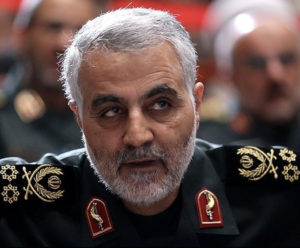

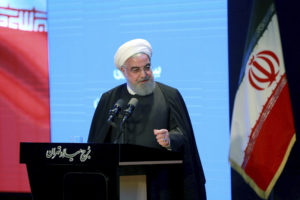

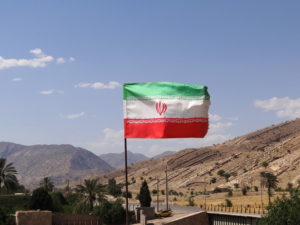
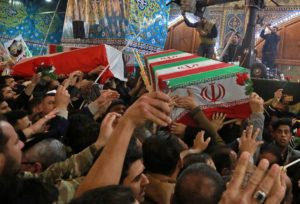


You need to be a supporter to comment.
There are currently no responses to this article.
Be the first to respond.